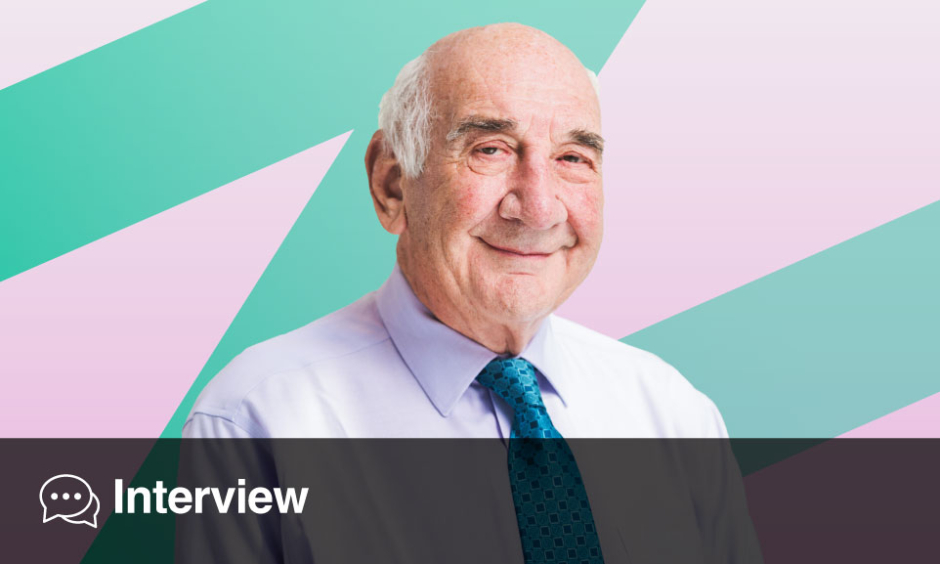Sir Peter Barnes | Senior Research Investigator; Professor of Thoracic Medicine, National Heart & Lung Institute, Faculty of Medicine, Imperial College London, UK
Citation: : EMJ Respir. 2025; 98-99. https://doi.org/10.33590/emjrespir/UEVK6481
![]()
As a leading figure in asthma and COPD research, how has the clinical landscape for these diseases changed most significantly under your watch, and what shifts still need to occur?
For more than 40 years, I have been involved in asthma and COPD research. The clinical management of these diseases has changed considerably, particularly in asthma, where inhaled corticosteroids (ICS) are now the mainstay of asthma control, combined with a rapid-acting β2-agonist as a reliever. Recently, the introduction of biologics has transformed the management of severe asthma. In COPD, the early use of long-acting inhaled bronchodilator combinations has greatly improved symptoms, but we still lack safe and effective anti-inflammatory treatments, so there are no treatments that significantly reduce disease progression and mortality.
You are currently investigating accelerated lung ageing and cellular senescence in COPD. Could you elaborate on the clinical implications of these mechanisms, and how they might inform future therapeutic strategies?
There is increasing evidence that accelerated lung ageing and cellular senescence are key driving mechanisms in COPD. Every cell type in the peripheral lungs of patients with COPD shows senescence, and these cells accumulate over time. Senescent cells secrete a distinct pattern of inflammatory mediators known as the senescence-associated secretory phenotype, which mirrors the pattern of inflammation we see in COPD lungs. That is why we believe that senescence, induced by the oxidative stress of cigarette smoke and air pollution, drives the low-grade neutrophilic inflammation seen in COPD.
We now understand the molecular pathways involved in cellular senesce in COPD, and this has identified new therapeutic targets that may lead to new treatments (known as senotherapies) that may reduce disease progression and mortality in COPD. We have also shown that senescence is spread from cell to cell by extracellular vesicles, which could contribute to disease progression and comorbidities that are also accelerated ageing diseases involving the same molecular pathways as in COPD.
As a member of the Scientific Committee of Global Guidelines on Asthma (GINA) and COPD (GOLD), how do you see the translation of complex molecular and cellular research into actionable clinical recommendations evolving? Are there areas where the gap between science and practice is most concerning?
Both GINA and GOLD have been very important in improving the diagnosis and management of asthma and COPD throughout the world. Their recommendations are based on the best available evidence, and their reports are updated every year. GINA and GOLD have greatly increased awareness of these diseases and provide a rational scientific basis for management recommendations and treatment choices. Of course, there is still a lot that needs to be understood about the underlying mechanisms of asthma and COPD. We do not yet have a cure for asthma, but with effective therapy, some patients may go into long-term remission. In a complex disease like COPD, we still have a lot to learn about different endotypes and phenotypes, so that personalised therapies can be developed in the future.
Biomarker discovery is a key focus in your work. What do you see as the most promising biomarkers currently in development for asthma or COPD, and how close are we to integrating them into routine clinical practice?
In asthma, our research identified fractional exhaled nitric oxide (FeNO) as a very useful biomarker for eosinophilic inflammation in the airways in patients with asthma. Since the test is easy for patients to perform, it is increasingly used in the diagnosis and management of asthma, and is now recommended in various guidelines, such as the UK asthma guidelines, as an essential biomarker for the management of asthma.
In COPD, blood eosinophil counts have proven useful in indicating which patients are more likely to respond to ICS. This simple test is now widely used in clinical practice, and hopefully, this will reduce the widespread overuse of ICS in the management of COPD.
You have contributed significantly to the development of novel inhaled therapies, including through RespiVert, an Imperial College spin-out company. What are the current challenges in respiratory drug development, and how are emerging technologies helping overcome them?
For asthma and COPD, the inhaled route is preferred in order to reduce systemic side effects. Developing inhaled therapies is more challenging than oral therapies because the pharmacokinetics are more challenging, and toxicology studies are expensive. It is also difficult to find molecules that are topically active and retained in the airways. In patients with COPD and severe asthma, the inhaled drug needs to reach the peripheral airways. So far, no new inhaled therapies for airway diseases have been approved, although several inhaled anti-inflammatory molecules are being assessed in clinical studies.
Given the global burden of COPD and asthma, especially in low-resource settings, what do you believe are the most urgent research or policy priorities to improve outcomes at the population level?
There is an urgent need for more clinical studies in low-resource settings, where the cost of drugs may be a major barrier to treatment. The importance of inhaled delivery and correct use of inhalers needs to be promoted, and the importance of adherence to drug treatment should be emphasised. The use of nurse practitioners to manage asthma in the community has been very successful in the UK, and this approach should be extended to low-resource settings in the future.
With >1,500 peer-reviewed publications and >150,000 citations, what recent developments in respiratory medicine do you believe are most likely to reshape the field in the next 5–10 years?
AI will be increasingly used to aid the diagnosis of respiratory diseases and develop new drug therapies that may be personalised to the individual patient. There is increasing evidence that accelerated ageing and cellular senescence are important driving mechanisms for chronic lung diseases, leading to the future use of senotherapies. Of particular interest are senolytic drugs, which lead to the elimination of senescent cells from tissues. These drugs have the potential to stop the progression of chronic lung diseases and may be effective when given intermittently, making it easier for drug development.
Finally, as a mentor to many and a leader in the field, what advice would you offer to young scientists striving to build meaningful careers in a rapidly evolving research landscape?
Research in respiratory disease is at a very exciting stage, with many new and powerful research techniques available to probe underlying disease mechanisms and to recognise different phenotypes/endotypes of lung disease. There are many unsolved questions in chronic respiratory disease and so now is a great time to undertake research in this area.








